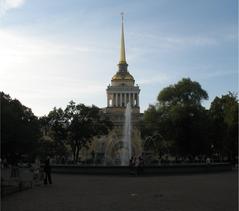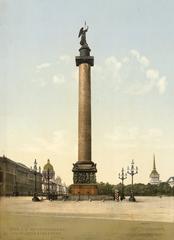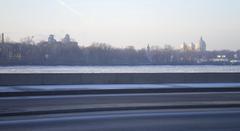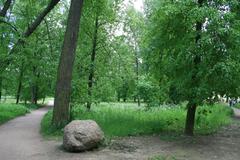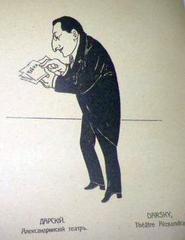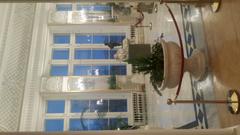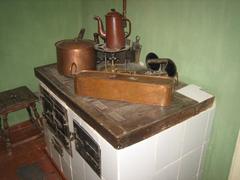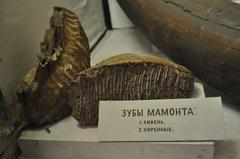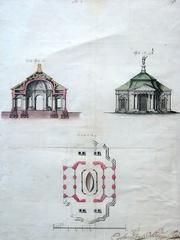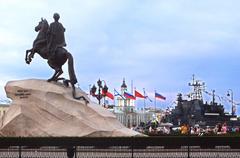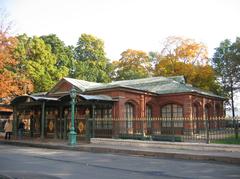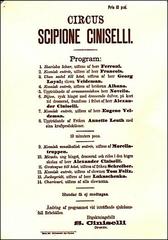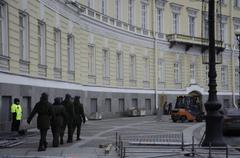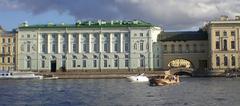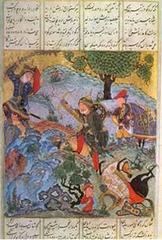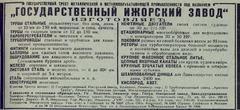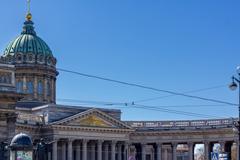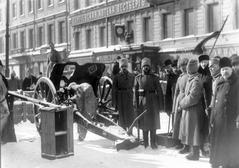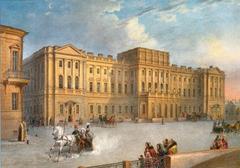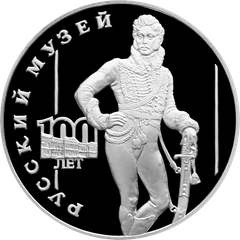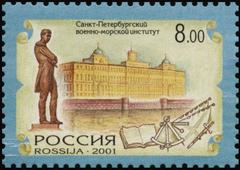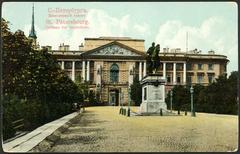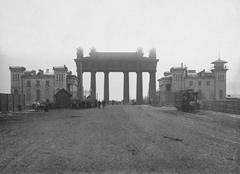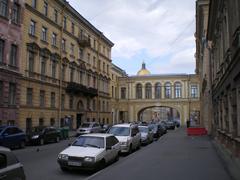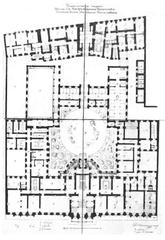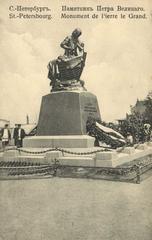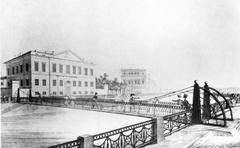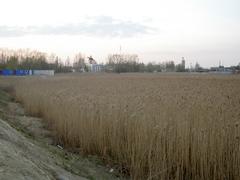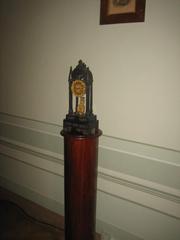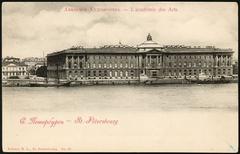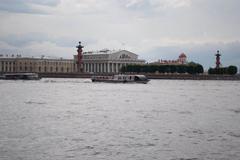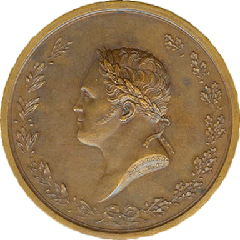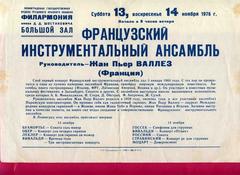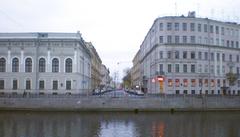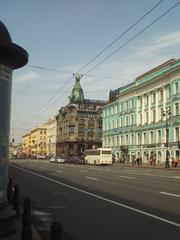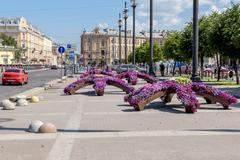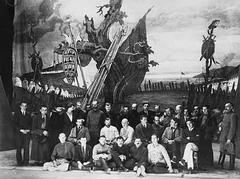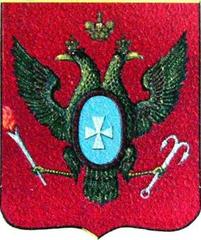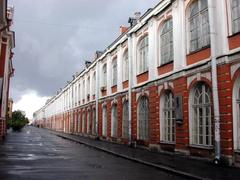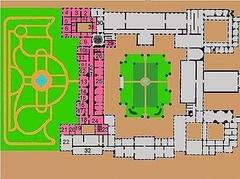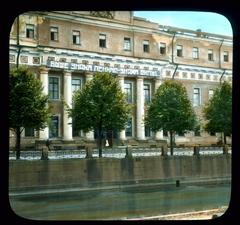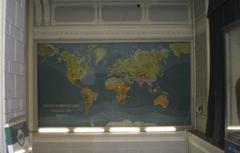Peter and Paul Cathedral Visiting Hours, Tickets, and Historical Sites in Saint Petersburg
Date: 17/07/2024
Introduction
The Peter and Paul Cathedral, or Петропавловский собор, is an architectural and historical gem located in the heart of Saint Petersburg, Russia. Established by Tsar Peter the Great as part of his grand vision to modernize Russia, the cathedral’s construction began in 1712 and was completed in 1733. This monumental structure, designed by Swiss-Italian architect Domenico Trezzini, is a prime example of the Petrine Baroque style, marking a significant departure from traditional Russian ecclesiastical architecture (source).
The cathedral is not only a masterpiece of architecture but also a pivotal site in Russian history. It serves as the final resting place for the Romanov dynasty, including almost all Russian emperors and empresses from Peter the Great to Nicholas II and his family, whose remains were interred there in 1998. This makes the cathedral a mausoleum of immense historical significance, providing a tangible link to Russia’s imperial past. The cathedral’s slender, golden spire, reaching a height of 122.5 meters, was the tallest building in Russia until the advent of modern skyscrapers, further emphasizing its historical and architectural importance (source).
In this comprehensive guide, we aim to provide all the necessary information for planning a visit to the Peter and Paul Cathedral. From its rich history and architectural significance to practical visitor tips, ticket information, and nearby attractions, this guide will ensure that your visit to this iconic landmark is both informative and memorable.
Table of Contents
- Introduction
- History of Peter and Paul Cathedral
- Visitor Information
- Special Events and Unique Photographic Spots
- Frequently Asked Questions (FAQ)
- Conclusion
History of Peter and Paul Cathedral
Foundation and Early Construction
The Петропавловский собор, or Peter and Paul Cathedral, is one of the most iconic landmarks in Saint Petersburg, Russia. Its history dates back to the early 18th century, closely tied to the founding of the city itself. Saint Petersburg was established by Tsar Peter the Great in 1703 as part of his efforts to modernize Russia and open a “window to the West.”
Historical Significance
Constructed between 1712 and 1733 under the orders of Peter the Great, the cathedral is the oldest landmark in Saint Petersburg and a symbol of the city’s founding. The cathedral was designed by Swiss-Italian architect Domenico Trezzini, who introduced the Petrine Baroque style, a departure from traditional Russian ecclesiastical architecture. This architectural innovation marked the beginning of a new era in Russian design, blending Western European influences with local traditions.
The cathedral’s historical significance is further underscored by its role as the burial site for almost all the Russian emperors and empresses from Peter the Great to Nicholas II and his family, whose remains were interred there in 1998. This makes the cathedral not only a religious site but also a mausoleum for the Romanov dynasty, providing a tangible link to Russia’s imperial past.
Architectural Significance
Architecturally, the Peter and Paul Cathedral is a masterpiece of the Petrine Baroque style. Its slender, golden spire, which reaches a height of 122.5 meters, was the tallest building in Russia until the advent of modern skyscrapers. The spire is topped with an angel holding a cross, a symbol that has become one of the most recognizable emblems of Saint Petersburg.
The interior of the cathedral is equally impressive, featuring a richly decorated iconostasis, intricate stucco work, and numerous icons and paintings. The use of light and space within the cathedral creates a sense of grandeur and solemnity, befitting its status as a royal burial site. The cathedral’s design and decoration reflect the ambitions of Peter the Great to modernize Russia and align it more closely with Western Europe.
Cultural Significance
The Peter and Paul Cathedral is not just a historical and architectural landmark; it is also a cultural icon. It stands as a testament to the vision of Peter the Great, who sought to transform Russia into a major European power. The cathedral’s construction marked the beginning of Saint Petersburg’s development as a “window to the West,” a city that would become a center of culture, science, and industry.
The cathedral also plays a significant role in Russian Orthodox religious life. It is part of the Peter and Paul Fortress, which includes several other important buildings, such as the Grand Ducal Burial Vault and the Trubetskoy Bastion. The fortress and cathedral together form a complex that is central to the history and identity of Saint Petersburg.
Symbolic Significance
Symbolically, the Peter and Paul Cathedral represents the continuity and resilience of the Russian state. Despite the political upheavals and changes in government over the centuries, the cathedral has remained a constant presence. It survived the Bolshevik Revolution, the Soviet era, and the Siege of Leningrad during World War II, emerging as a symbol of endurance and faith.
The cathedral’s role as the final resting place of the Romanovs adds another layer of symbolic significance. The reburial of Nicholas II and his family in 1998 was a moment of national reconciliation, acknowledging the tragic end of the imperial family and the tumultuous history of 20th-century Russia. This event underscored the cathedral’s importance as a site of memory and reflection for the Russian people.
Visitor Information
Opening Hours
The cathedral is open to visitors daily, but hours can vary depending on the season and special events. Typically, it is open from 10:00 AM to 6:00 PM, with extended hours during the summer months. It is advisable to check the official website for the most current information before planning your visit.
Ticket Information
Admission to the cathedral is typically included in the ticket for the Peter and Paul Fortress. As of 2024, ticket prices are approximately 600 RUB for adults and 300 RUB for students and seniors. Children under the age of 7 can enter for free. Tickets can be purchased at the entrance or online. Combination tickets that include access to other attractions within the Peter and Paul Fortress are also available and can offer a more economical option for visitors planning to explore multiple sites.
Guided Tours
To fully appreciate the historical and architectural significance of the cathedral, consider joining a guided tour. Many tours are available in multiple languages and provide in-depth information about the cathedral’s history, architecture, and the Romanov dynasty. Guided tours can be booked in advance through the official website or at the ticket office. Prices for guided tours vary, but they generally range from 1,000 to 2,000 RUB per person.
Dress Code and Conduct
As the cathedral is a place of worship, visitors are expected to dress modestly. Shoulders and knees should be covered, and hats should be removed upon entering the cathedral. Headscarves for women are not mandatory but are appreciated.
Accessibility
The Peter and Paul Cathedral is partially accessible to visitors with disabilities. There are ramps and elevators available, but some areas, particularly the upper levels, may be challenging to access. It is recommended to contact the cathedral staff in advance to arrange any necessary accommodations.
Nearby Attractions
The Peter and Paul Fortress complex includes several other attractions worth visiting, such as the Trubetskoy Bastion, the Grand Ducal Burial Vault, and the Museum of the History of Saint Petersburg. Plan to spend at least half a day exploring the entire complex.
Dining and Refreshments
There are several cafes and restaurants within walking distance of the Peter and Paul Cathedral. For a quick bite, consider visiting the café located within the fortress grounds, which offers a selection of sandwiches, pastries, and beverages. For a more substantial meal, the nearby Koryushka Restaurant offers traditional Russian cuisine with a view of the Neva River.
Souvenirs and Shopping
The cathedral has a small gift shop where visitors can purchase souvenirs such as postcards, religious icons, and books about the history and architecture of the cathedral. Additionally, there are several souvenir stalls within the Peter and Paul Fortress that offer a variety of items, including traditional Russian crafts and memorabilia.
Safety and Security
The Peter and Paul Cathedral is a safe and well-maintained site, but it is always advisable to remain vigilant, especially in crowded areas. Keep an eye on personal belongings and be aware of your surroundings. The cathedral and fortress grounds are patrolled by security personnel, and there are information points where visitors can seek assistance if needed.
Language and Communication
While many of the signs and informational plaques within the cathedral are in Russian, there are English translations available. Additionally, many of the staff members and tour guides speak English, making it easier for international visitors to navigate and understand the historical context of the site.
Photography and Filming
Photography is generally allowed inside the Peter and Paul Cathedral, but the use of flash and tripods is restricted. For those interested in professional photography or filming, it is necessary to obtain special permission from the cathedral administration. This can be arranged in advance through the official website.
Weather Considerations
Saint Petersburg’s weather can be unpredictable, with sudden changes even during the summer months. It is advisable to carry an umbrella or a raincoat, especially if you plan to explore the outdoor areas of the Peter and Paul Fortress. Comfortable walking shoes are also recommended, as the fortress grounds are extensive and can involve a fair amount of walking.
Special Events and Unique Photographic Spots
Throughout the year, the Peter and Paul Cathedral hosts various musical concerts, religious services, and cultural events that offer a unique experience for visitors. One of the best spots for photography is from the banks of the Neva River, capturing the cathedral’s reflection in the water.
Frequently Asked Questions (FAQ)
Q: What are the Peter and Paul Cathedral visiting hours? A: The cathedral is typically open from 10:00 AM to 6:00 PM, with extended hours during the summer months. Check the official website for the latest updates.
Q: How much do tickets to the Peter and Paul Cathedral cost? A: As of 2024, tickets cost approximately 600 RUB for adults and 300 RUB for students and seniors. Children under 7 can enter for free.
Q: Are guided tours available? A: Yes, guided tours are available in multiple languages and can be booked in advance through the official website or at the ticket office.
Q: Is the Peter and Paul Cathedral accessible to visitors with disabilities? A: The cathedral is partially accessible, with ramps and elevators available. Contact the staff in advance for specific accommodations.
Q: Can I take photographs inside the cathedral? A: Photography is allowed, but the use of flash and tripods is restricted. Professional photography requires special permission.
Conclusion
In conclusion, the Peter and Paul Cathedral stands as a testament to Saint Petersburg’s rich history and cultural heritage. Its significance extends beyond its architectural beauty, serving as a mausoleum for the Romanov dynasty and a symbol of Russia’s enduring legacy. The cathedral’s design, featuring the Petrine Baroque style, reflects Tsar Peter the Great’s vision to align Russia with Western Europe, marking a pivotal moment in Russian architectural history (source).
Visiting the Peter and Paul Cathedral offers an immersive experience that connects visitors with Russia’s imperial past. The cathedral’s opening hours, ticket options, and guided tours provide ample opportunities to explore its historical and cultural significance. Additionally, the surrounding Peter and Paul Fortress and nearby attractions offer a comprehensive exploration of Saint Petersburg’s history (source).
Whether you are drawn by the cathedral’s historical importance, architectural splendor, or its role in Russian Orthodox religious life, a visit to the Peter and Paul Cathedral is an enriching experience that should not be missed. For more travel tips and updates, be sure to follow us on social media and download our mobile app Audiala to enhance your visit to Saint Petersburg.
